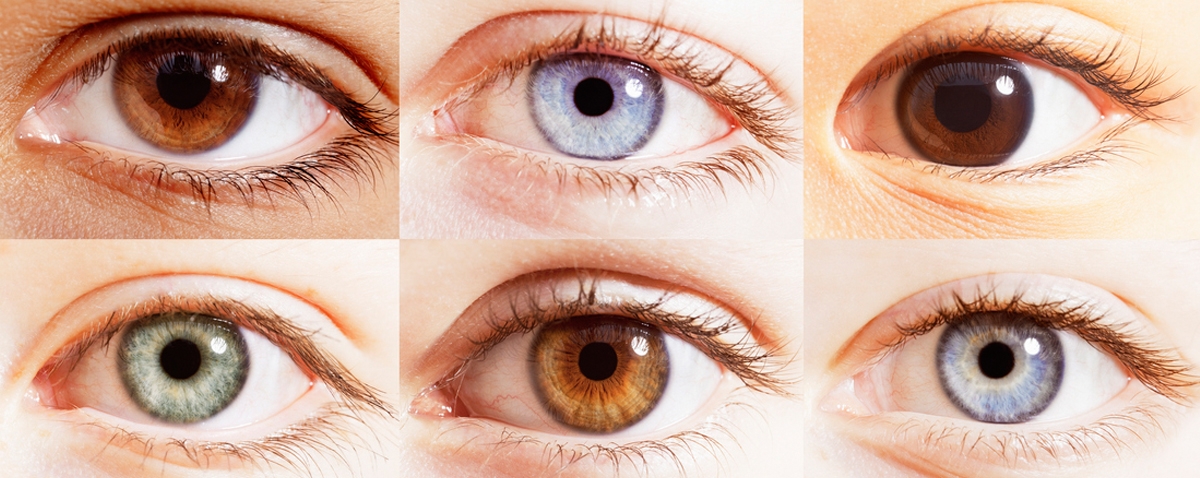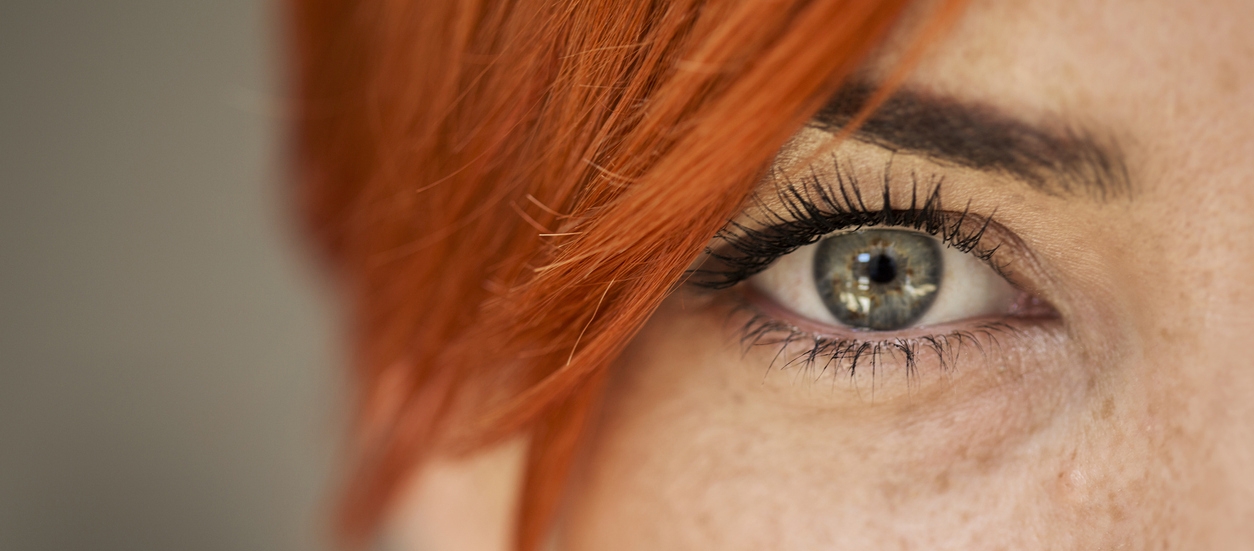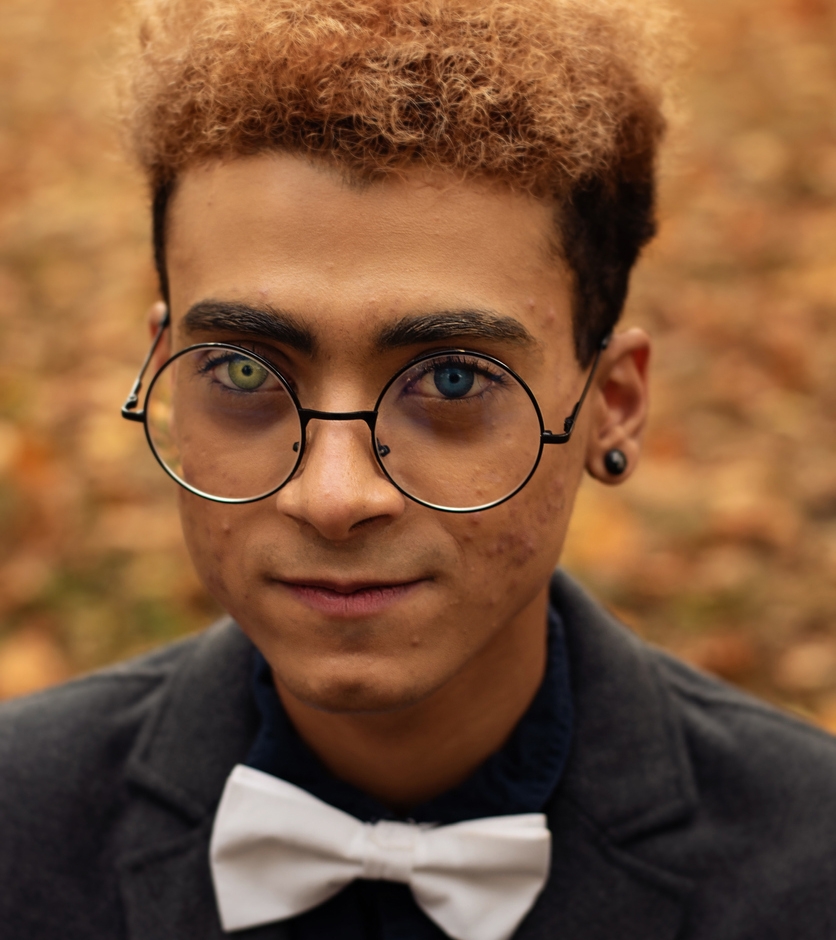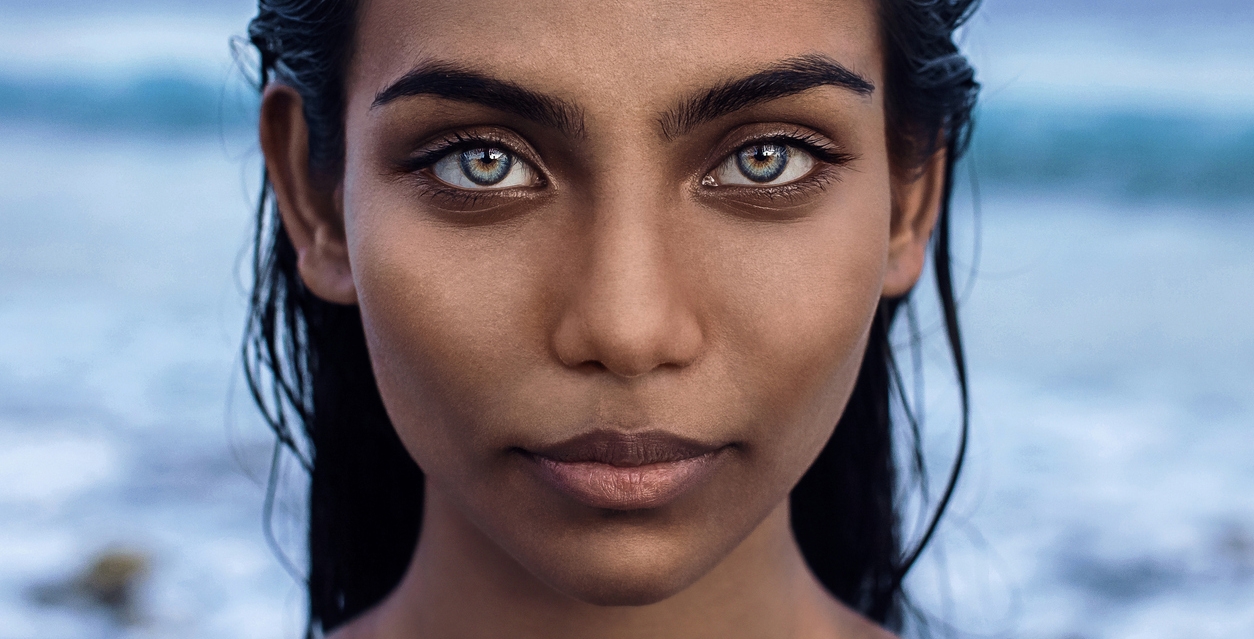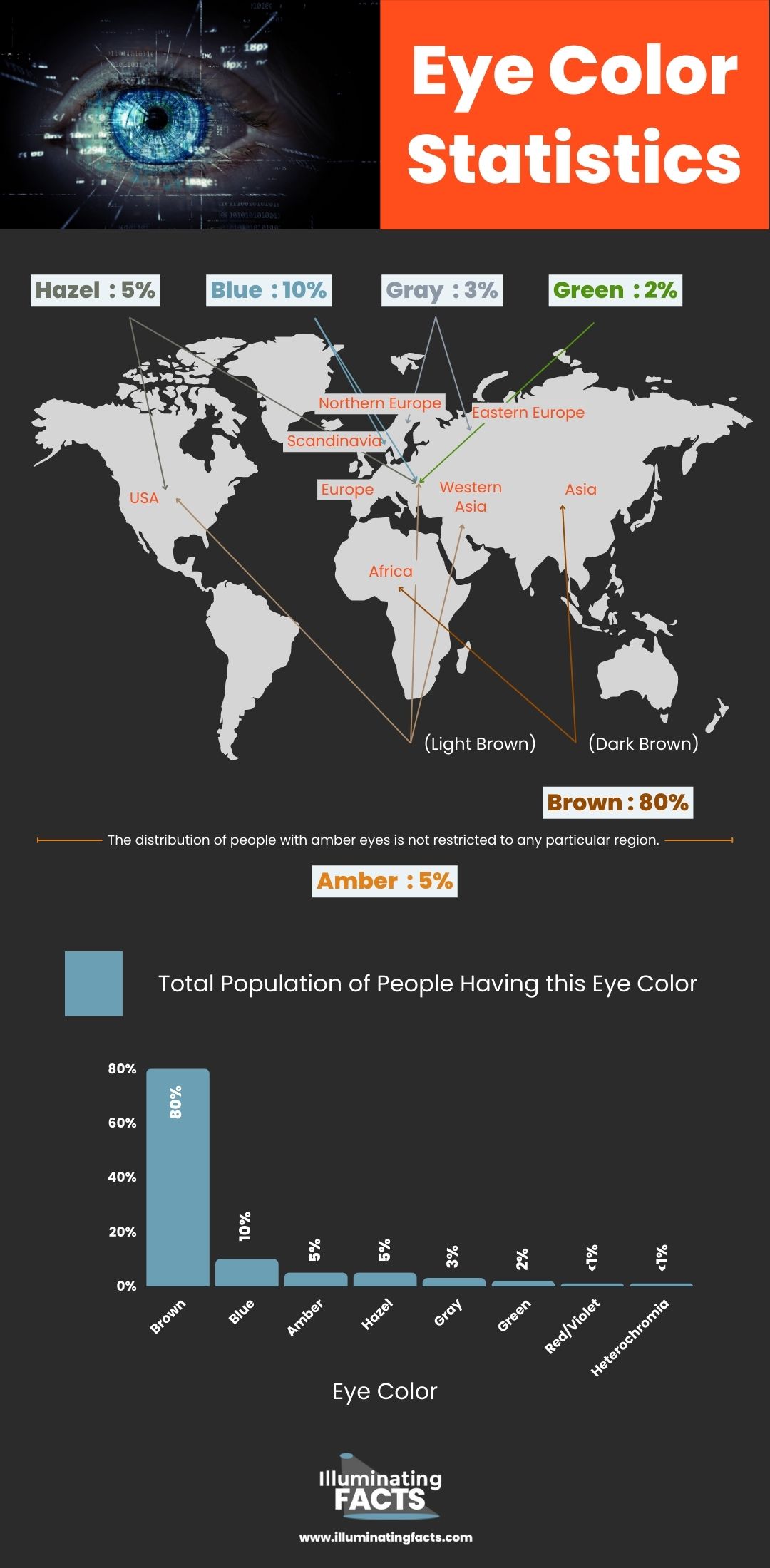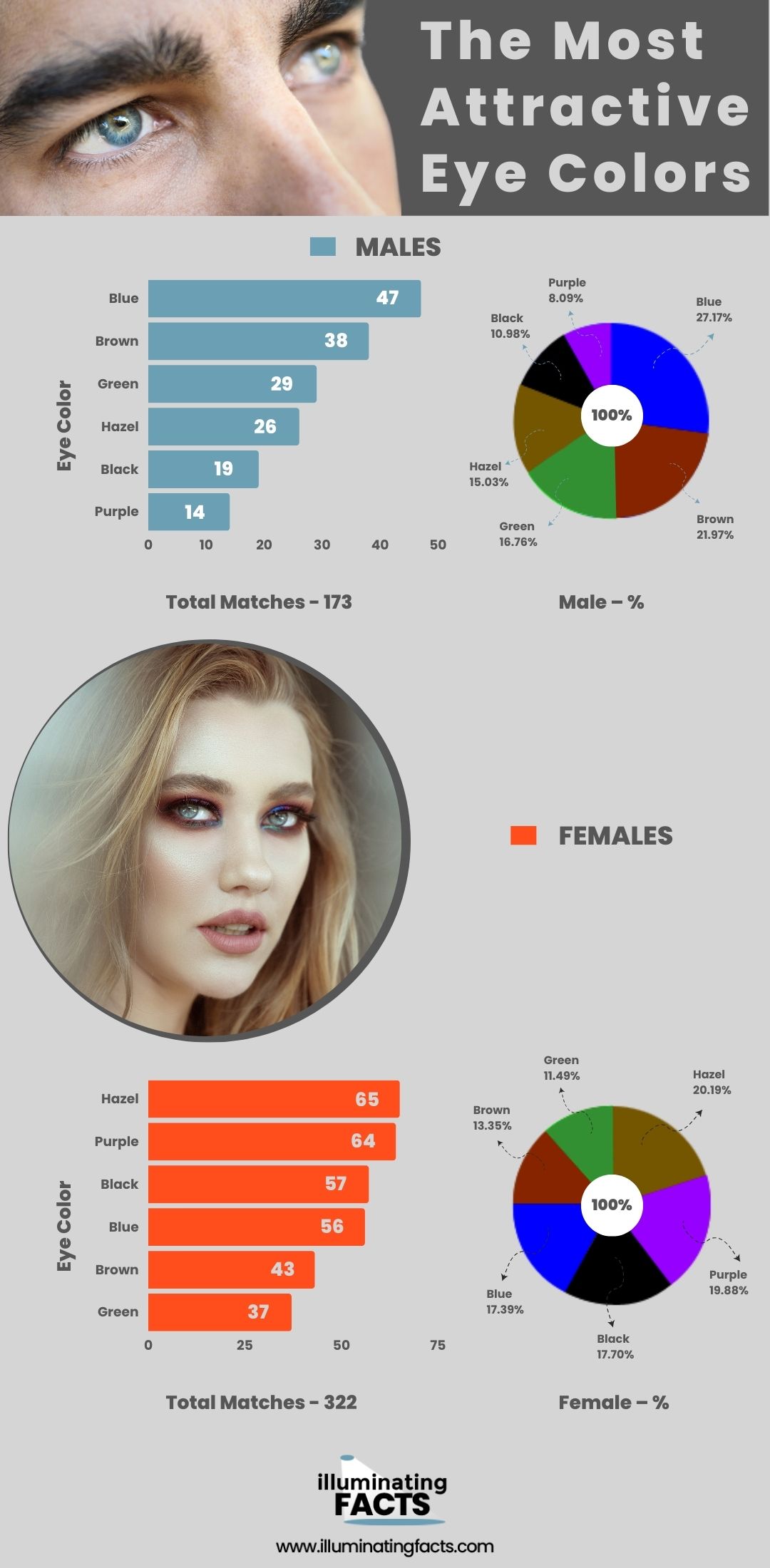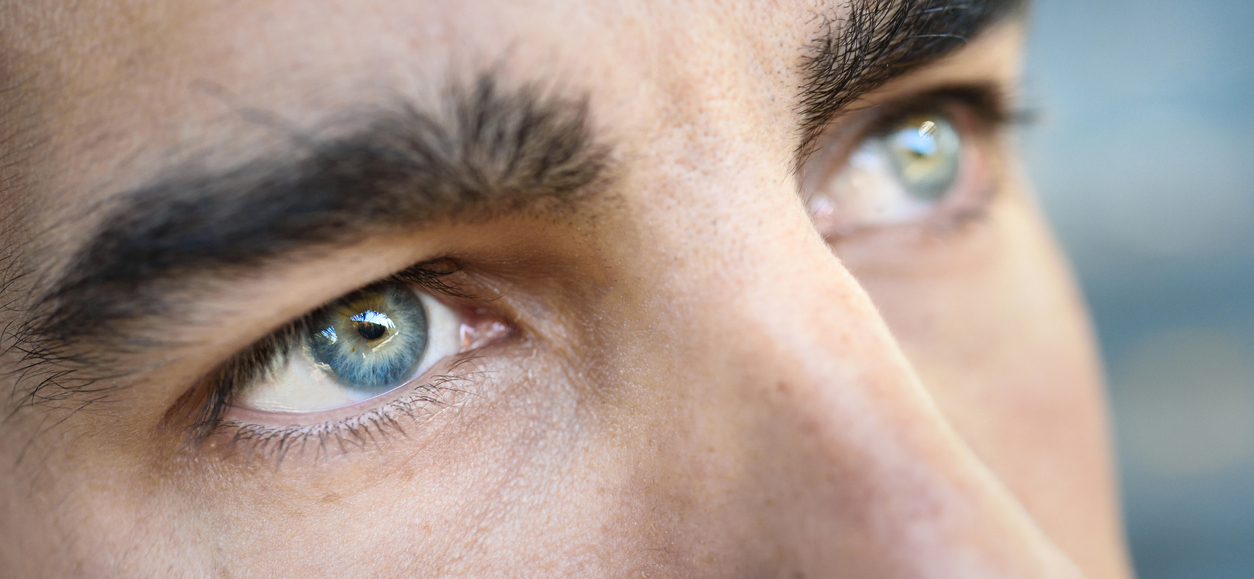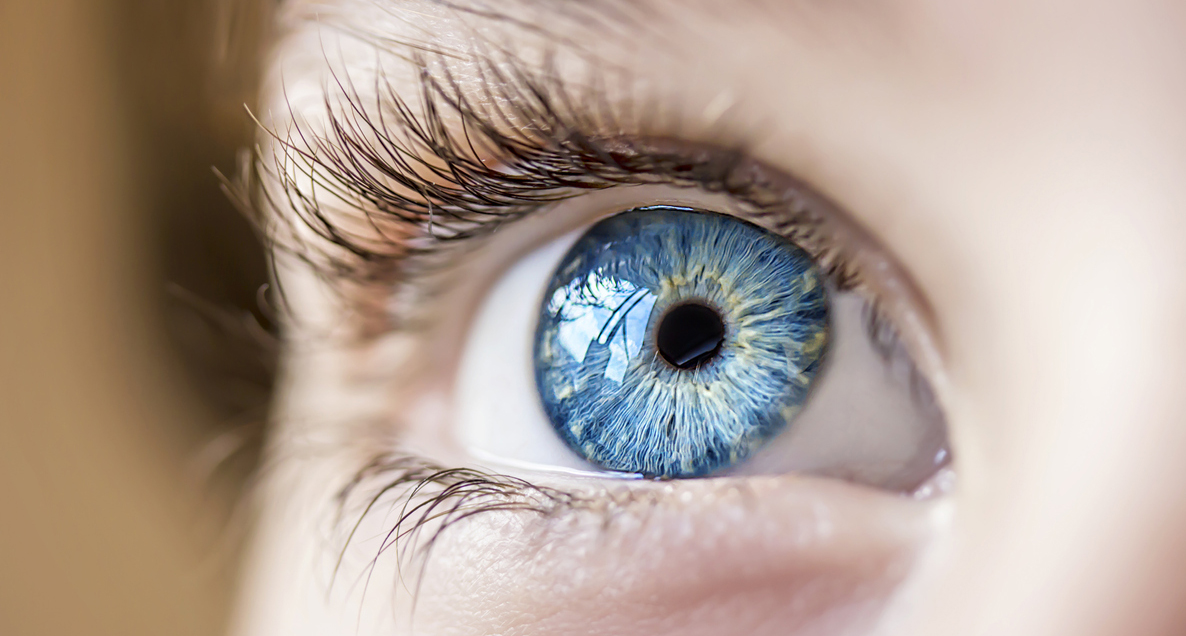Table of Contents
Hundreds of thousands of humans are born with distinctive eye colors. While blue, brown, and green occur most frequently around the world, a wide spectrum of DNA combinations can lead to other eye colors.
Most people in the world have brown eyes, with blue eyes ranking second.
About 2% of people have green eyes, while 10% have blue eyes. 86% of people in Ireland and Scotland have one of these two eye colors. Additionally, Albinos have red eyes because the lack of pigmentation in their eyes allows blood vessels to be seen through the iris.
What Determines Eye Color?
Scientists once believed that eye color was the result of a single gene, with brown eyes being dominant over blue eyes. They now know, however, that eye color is determined by multiple genes and influenced by several factors, including genes involved in the production of melanin. [1]
The color of someone’s eyes depends on the amount of melanin in their iris, which is a brown pigment. If there is more melanin, eyes are darker; if there is less melanin, eyes are lighter. This is why blue and green eyes are rare. They result from less melanin in the iris.
For example, those with blue eyes have the least melanin, and those with brown eyes have more.
Top 3 Rarest Eye Colors
Although red/violet and heterochromic eyes are rare (seen in less than 1% of the population), it is difficult to precisely determine which eye color is the rarest. However, if you have never seen any of the ones listed below, it is because they are not common. This list is from least to most common:
1. Heterochromia and Anisocoria
Heterochromia and anisocoria are both eye disorders but are distinguished by their symptoms. Heterochromia is commonly confused with anisocoria, a condition in which one pupil is dilated while the other remains normal. Although David Bowie was widely rumored to have heterochromia, his condition was actually anisocoria.
Heterochromia
Heterochromia is a condition in which the irises in both eyes are not the same color. The condition can be present at birth or develop later in life. In general, heterochromia is a genetic trait passed down from parents to their children. It can also be caused by disease or injury to the eye as an infant or young child.
Anisocoria
Anisocoria is a condition in which one pupil is larger than the other, resulting in unequal eye sizes. The cause of anisocoria can vary widely and include things like Horner’s syndrome, traumatic brain injury, and certain medications.
2. Red or Pink
The two major conditions that give the eyes their characteristic red or pink color are albinism and blood leaking into the iris. The root cause of albinism is a lack of pigment, but some forms of albinism can cause eyes to appear red or pink because they cause blood vessels in the back of the eye to leak.
3. Violet
People with albinism sometimes have eyes that appear violet. This appearance is caused by a lack of pigment coupled with the red color of blood vessels in the eye.
Source: [2]
Eye Color Statistics
Eye color percentages vary from country to country, but the easiest way to track eye color distribution is by the most common eye colors found in a country/region.
| Eye Color | Total Population of People Having this Eye Color | Most Commonly Found in |
| Brown | 80% | Asia and Africa (Dark Brown); Western Asia, USA, and Europe (Light Brown) |
| Blue | 10% | Scandinavia, Europe |
| Amber | 5% | The distribution of people with amber eyes is not restricted to any particular region. |
| Hazel | 5% | Europe, US |
| Gray | 3% | Parts of Eastern and Northern Europe |
| Green | 2% | Central, Northern, and Western Europe |
| Red/Violet | <1% | N/A |
| Heterochromia | <1% | N/A |
Brown
While estimates vary widely, it appears that nearly 80 percent of people in the world possess brown eyes. Dark eyes are more prevalent in Asia and Africa than light brown eyes, which are more common in Western Asia and parts of the US and Europe.
Blue
People with blue eyes are less common than those with other eye colors (10%), but the rarity of this trait has made blue eyes something of an attraction in Western culture.
Blue-eyed people are most common in the Scandinavian region and in isolated pockets across Europe. Some experts believe blue eyes are associated with less melanin production and potentially better night vision.
Amber
Amber is one of the rarest eye colors in the world, occurring in only 5% of all individuals. Amber eyes are not confined to any geographical region and can be found worldwide.
Hazel
Hazel eyes are moderately common eye color, found in roughly 5% of the world’s population. Most people belonging to Europe and the US have hazel eyes.
Gray
Gray is one of the least common eye colors in the world, with only around 3% of people having it. People with gray eyes can be seen in many parts of Eastern and Northern Europe.
Green
Green eyes are the rarest of them all, occurring in less than 2% of the population. Green eyes are most common among people from Central, Northern, and Western Europe.
The Most Attractive Eye Colors
A UK-based Lens company performed research on several dating sites to find out which eye color drew the most attention from all the possible partners. [5]
For their study, researchers used the same images and biographies for an online dating profile for two people—one male and one female—and then modified their eye colors in image-editing software. This is what they found out:
Males
Blue was the most attractive eye color in males as it got the most matches (27%). Brown eyes were the second-most popular color, at 22%. On the other hand, purple, a color impossible in natural eyes and only achieved through wearing colored contact lenses, received 8% of all matches by possible female partners.
| Eye Color | Total Matches | Male – % |
| Blue | 47 | 27.17% |
| Brown | 38 | 21.97% |
| Green | 29 | 16.76% |
| Hazel | 26 | 15.03% |
| Black | 19 | 10.98% |
| Purple | 14 | 8.09% |
| Total | 173 | 100% |
Females
Among women, hazel eyes received the most “likes” and were only one match behind purple eyes.
| Eye Color | Total Matches | Female – % |
| Hazel | 65 | 20.19% |
| Purple | 64 | 19.88% |
| Black | 57 | 17.70% |
| Blue | 56 | 17.39% |
| Brown | 43 | 13.35% |
| Green | 37 | 11.49% |
| Total | 322 | 100% |
The most popular color of eyes, brown, received only 13% of matches, while green eyes were the least successful in finding a match, with only 11.49% of potential male partners being attracted to them.
Interesting Facts about Eye Colors
All Blue-eyed People Share a Common Ancestor
Danish researchers have determined that everyone with blue eyes is a descendant of a single person who lived between 6,000 and 10,000 years ago. This ancestor carried a genetic mutation for blue eyes but had brown eyes. [6]
Over time, the genetic mutation was passed down through many generations until about 8,000 years ago, when the first individual with blue eyes appeared.
Eye Color Can Affect Your Sensitivity to Light
If your eyes are susceptible to the sun, you may have blue or green eyes. These colors indicate a lack of melanin, making it more difficult to block harsh sunlight and UV rays. [7]
No One Can Predict a Baby’s Eye Color
Although it is commonly believed that eye color is determined by dominant and recessive genes, this is not the case. In fact, a combination of up to 16 genes determines eye color, but babies are typically born without melanin in their eyes, which can make them look blue at birth. [8] It takes between six months and three years for the melanocyte stroma cells in the iris to produce more melanin and change the color of a child’s eyes.
Every Human in the Past had Brown Eyes
According to researchers at the University of Copenhagen, blue eyes were once a rarity among humans; however, a single genetic mutation likely occurred around 10,000 years ago that caused people with brown eyes to have descendants with blue eyes. [9]
A Person Can Have Several Colors in a Single Iris
More than one color can appear in the iris of one eye; this condition is called sectoral heterochromia iridis. Like complete heterochromia, sectoral heterochromia can be hereditary or acquired through injury or disease. Famous people who have sectoral heterochromia iridis include Superman star Henry Cavill and American actress and model Kate Bosworth. [10]
Eye Color May Change as You Age
Most people’s eye color is fixed by the time they are one year old, but around 15 percent of Caucasians (a group of people having European ancestry ) experience a gradual change in eye color later in life. [11]
A change in hue can indicate either Horner’s syndrome or pigmentary glaucoma. Horner’s syndrome is a rare condition caused by damage to the string of nerves that are responsible for dilating the pupil and raising the eyelid.
Conclusion
The iris of an eye can show different colors, with brown being the most common, followed by blue. Hazel eyes are a mix of brown and green, while green eyes are the rarest and can be caused by genetic conditions like heterochromia, which distorts the coloring of the iris resulting in half of one iris being a noticeably different color from the other. And lastly, purple and red eyes exist but are rare due to genetic mutations.
References
- US National Library of Medicine. (n.d.). Is eye color determined by genetics?: Medlineplus Genetics. MedlinePlus. Retrieved September 12, 2022, from https://medlineplus.gov/genetics/understanding/traits/eyecolor/
- TATIANA. (2015, July 7). 6 rare and Unique Eye Colors. Owlcation. Retrieved September 12, 2022, from https://owlcation.com/stem/rare-eye-colors
- Eye Color by Country 2022 (n.d.). Retrieved September 12, 2022, from https://worldpopulationreview.com/country-rankings/eye-color-by-country
- Simpson, V. (2020, October 6). The world’s population by Eye Color. WorldAtlas. Retrieved September 12, 2022, from https://www.worldatlas.com/articles/which-eye-color-is-the-most-common-in-the-world.html
- These are the most attractive eye colors. Lenstore Vision Hub. (2021, October 12). Retrieved September 12, 2022, from https://www.lenstore.co.uk/eyecare/what-are-the-most-attractive-eye-colours
- The University of Copenhagen. (2008, January 31). Blue-eyed humans have a single common ancestor. ScienceDaily. Retrieved September 11, 2022, from www.sciencedaily.com/releases/2008/01/080130170343.htm
- Dr, M. M. (2021, July 22). Are light eyes more susceptible to UV damage?: UV damage to eyes. Optima Eye. Retrieved September 12, 2022, from https://optimaeye.com/are-light-eyes-more-susceptible-to-uv-damage/
- Gordon, S. (2022, January 26). Predicting your baby’s eye color is not an exact science. Verywell Family. Retrieved September 12, 2022, from https://www.verywellfamily.com/baby-eye-color-4685815
- Mukamal, R. (2017, April 7). Why are brown eyes most common? American Academy of Ophthalmology. Retrieved September 12, 2022, from https://www.aao.org/eye-health/tips-prevention/why-are-brown-eyes-most-common
- Cristol, H. (n.d.). Heterochromia: Causes, types, risk factors, and treatment. WebMD. Retrieved September 12, 2022, from https://www.webmd.com/eye-health/heterochromia-iridis
- 5 facts about eye color. Lenstore.co.uk. (n.d.). Retrieved September 12, 2022, from https://www.lenstore.co.uk/eyecare/5-facts-about-eye-colour

